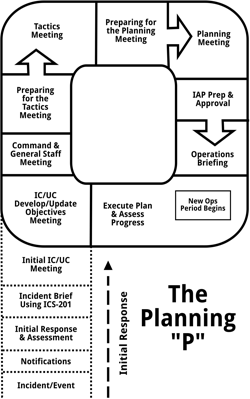We’re an odd lot, running into harms way when others are running away. Indeed, we run into burning buildings that even the rats and raccoons are running out of—I’ve seen it firsthand! Thank God we do what we do, lest the anarchy of fire and pestilence overtake us all.
While NIMS/ICS and national (misnomer) training standards have brought some organization to the labyrinth patchwork of the American fire service, we clearly have much to do. Our history and experience in Prince George’s County, MD, provide a microcosmic look at the evolution of the international fire service. Towns sprung up and townsfolk took on the responsibility of providing services they found no one else providing. Bucket brigades were the first supply lines of protection as town volunteers fought to hold fires within blocks. Horses, steam engines, gas and diesel combustion, Model As and Ts, engines, pumpers, tankers/tenders, trucks, towers, rescue squads, rescue-engines, engine-tankers, etc., paid drivers, volunteer officers, combination crews, all paid cities—my, my, how our new fire service has evolved.
Get into rhythm
Much has been said to describe fire/EMS departments as paramilitary organizations. I agree 100 percent with that comparison, with the emphasis on the para. Much as militias and militarized units evolved, the fire service grew out of a volunteer force that required discipline and structure to become well-oiled, successful firefighting machines.
Our success in “battle” and planning is driven by a battle rhythm that manages to balance needs and resources—all supporting desired outcomes surrounding current and future events. A battle rhythm with a poor tempo will be a battle with a poor outcome. While the concepts of battle rhythm in the military and the fire service are similar, the difference between poor outcomes in the military and the fire service are quintessentially diverse. Poor outcomes in fire service performance will not change whole governments or a culture of people as poor outcomes in military operations have routinely proven.
The true paramilitary comparison between the fire service and the military is the essence of an effective battle rhythm with a persistently appropriate tempo. For the new member, that battle rhythm should be evident from Day 1 of their “recruitment.” The chief sets the organizational tempo that manages the battle rhythm being executed within every station, office or command level. If for some reason they’re not, mark my words, poor outcomes will follow. Whether for operational purposes or daily activities, it is not a stretch at all to consider using the venerable “Planning P” as a basis to establish your battle rhythm (see p. XX). All levels of the plan, whether operational or activity-based, pull on information garnered from multiple sources.
The “battle” or “war” is ultimately won through effective management of individual campaigns within the organization. Typically (but not always) the organization “goes as the chief goes.” So I ask, what is important to you or your chief? Training, safety, EMS, community risk reduction (CRR), risk management, discipline, the health and welfare of membership, apparatus and equipment, camaraderie, personal power, running up and down the road with your siren, getting to every fire first, moving above the next guy? Our “planning battles” should be about finding ways to produce successful outcomes.
An effective battle rhythm will balance training, safety and expectations while providing the proper tools, guidance and necessary follow up to win the battle. That does NOT include the self-centered, ego-driven choices that we seem to routinely experience. There is NO PLACE for unprofessional conduct or performance in an effective battle rhythm. Regardless of our particular battle, it is important to manage expectations of everyone involved. Everything we do, whether inside the station or on the units, should ultimately focus on quality customer service. (And I do acknowledge that under-resourced and/or overworked departments will have difficulty “winning” every battle without additional assistance.)
For a public safety agency to be effective, battle rhythm needs to be managed every day in everything you do. Constant recruitment, training, community engagement, professional appearance, discipline and even execution of routine tasks has a battle rhythm. Every office or manager will likely have a slightly different battle rhythm and tempo to which membership will have to adjust. Ultimately, the chief’s battle rhythm manages the war, setting the tempo that allows the individual office battle rhythms to flow and succeed. Once again, if it’s important to the chief, it will be important to the troops who are fighting the battle. Remember, our communities expect and deserve a professional battle that services their needs; their expectations and their needs don’t care whether you are a paid, volunteer or part of a combination crew.
Find the right tempo
We have a responsibility to each other and to our communities to ensure that our battle rhythm has the right tempo for success. Are you fighting the right war and battles, setting the right tempo, and managing your battle rhythm effectively for the right reasons? Let’s make sure we’re doing the right things, the right ways, at the right time, for the right reasons. I urge you to establish and manage your battle rhythm, set an effective tempo, and work toward successful outcomes every day.

Marc S. Bashoor
MARC S. BASHOOR joined the fire service in 1981. In 2017, he retired as fire chief of Prince George’s County, MD, Fire/EMS, the largest combination department in North America. His progressive community-based approach led to record hiring and a strategic apparatus replacement plan.
Twitter: @ChiefBashoor
Email: [email protected]






